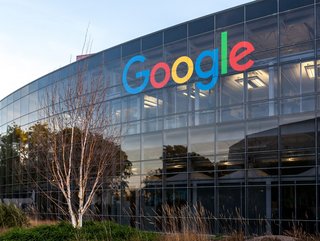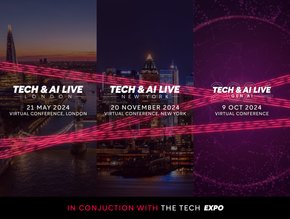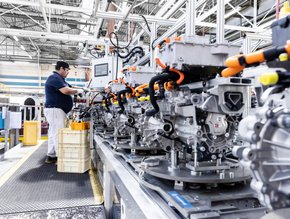Google at 25: From a Search pioneer to AI breakthroughs

This month marks 25 years since Stanford University students Larry Page and Sergey Brin officially founded Google from a California suburb, hoping to organise the world's information and make it universally accessible and useful.
Technology Magazine looks at the groundbreaking company’s history, and how it went from a California garage to a search pioneer and a leader in advanced technologies from AI to quantum computing research.
Google’s meteoric rise
Google was born in a garage, much like many of the great tech companies of its era. Page and Brin's algorithm, PageRank - developed as part of a research project at Stanford - revolutionised search by ranking web pages based on relevance, giving users more accurate and useful results.
The pair first met in 1995 when the former, a prospective grad school applicant, was shown around the Stanford University campus by the latter, a student there.
By the following year, they had struck a partnership and were building a search engine called Backrub from their dorm rooms, with the aim of using links to determine the importance of web pages.
Backrub was subsequently renamed Google and soon caught the attention of Silicon Valley investors. Then, in August 1998, Andy Bechtolsheim, co-founder of Sun Microsystems, wrote Page and Brin a cheque for US$100,000 to really get Google Inc. off the ground.
The founders decided it was time to upgrade their work environment and set up an office in a garage belonging to their friend, Susan Wojcicki, in Menlo Park, California. Several months later, having recognised Google’s potential, she joined the team and went on to become one of its longest-serving employees, assuming a host of leadership roles including CEO of subsidiary company, YouTube.
Growth in the early 2000s
When Google became the client search engine for one of the internet’s most popular sites, Yahoo!, in 2000, activity began to explode.
The following year saw the two founders recruit Eric Schmidt as CEO of Google. At this point, the company was only a few years old but was rapidly growing. To ensure its success Brin and Page thought it best to hire someone with experience to guide the company or to provide “adult supervision”, as Brin said in an interview.
In 2003, having outgrown the garage, Google moved to its current headquarters, The Googleplex, in Mountain View, California, taking with it the spirit of doing things differently.
Three years later, the word ‘Google’ entered the Oxford English Dictionary, demonstrating the remarkable rise and far-reaching influence of this unique business venture.
Around the same time, Google purchased the increasingly popular video-sharing platform, YouTube, for a sum of US$1.65 billion. Today, it is estimated to be worth as much as US$180bn.
In 2003, Google launched Google News, a content aggregation service that eventually changed how digital media was published and distributed on the web.
After being developed for three years, the company launched Gmail in 2004 with 1GB of storage and advanced search capabilities.
These days, Google is responsible for hundreds of products used by billions of people across the globe, including Android, Gmail and of course, its trusty search engine.
A focus on AI
Today Google is helmed by Sundar Pichai, who initially joined the company back in 2004 and progressed through the ranks to eventually become CEO in 2015. He also replaced Page as CEO of Alphabet, Google's parent company, in 2019.
Under Pichai’s leadership, Google has been focused on developing products and services – powered by the latest advancements in artificial intelligence – that “offer help in moments big and small”.
With the release of its large language model chatbot Bard in February, Pichai described AI as “the most profound technology we are working on”.
Google has a rich history of utilising AI to enhance its search product. The company’s first Transformer model, BERT, was able to grasp the complexities of human language and two years ago, it introduced MUM, which boasts 1,000 times greater power than BERT and has a multi-lingual and advanced understanding of information, including the ability to identify key moments in videos and offer vital information, including crisis support, in numerous languages.
The company said it would be making these cutting-edge AI advancements available in its products, starting with Search.
“When people think of Google, they often think of turning to us for quick factual answers, like ‘how many keys does a piano have?’,” Pichai said. “But increasingly, people are turning to Google for deeper insights and understanding — like, ‘is the piano or guitar easier to learn, and how much practice does each need?’ Learning about a topic like this can take a lot of effort to figure out what you really need to know, and people often want to explore a diverse range of opinions or perspectives.”
The company is also making progress in the race for a quantum advantage. advancing the state of the art of quantum computing and developing the tools for researchers to operate beyond classical capabilities.
From its campus in Santa Barbara, the Google Quantum AI lab’s objective is to create a quantum computer that can tackle real-world problems. Google aims to investigate near-term applications that are forward-compatible with a large-scale universal error-corrected quantum computer.
“It’s a huge privilege to reach this milestone, made possible by the people who use our products and challenge us to keep innovating, the hundreds of thousands of Googlers past and present who have given their talents to building those products, and our partners who believe in our mission as much as we do,” Pinchai wrote in a blog celebrating the company’s 25th birthday.
“Our search for answers will drive extraordinary technology progress over the next 25 years.
“And in 2048, if, somewhere in the world, a teenager looks at all we’ve built with AI and shrugs, we’ll know we succeeded. And then we’ll get back to work.”
******
For more insights into the world of Technology - check out the latest edition of Technology Magazine and be sure to follow us on LinkedIn & Twitter.
Other magazines that may be of interest - AI Magazine | Cyber Magazine.
Please also check out our upcoming event - Cloud and 5G LIVE on October 11 and 12 2023.
******
BizClik is a global provider of B2B digital media platforms that cover Executive Communities for CEOs, CFOs, CMOs, Sustainability leaders, Procurement & Supply Chain leaders, Technology & AI leaders, Cyber leaders, FinTech & InsurTech leaders as well as covering industries such as Manufacturing, Mining, Energy, EV, Construction, Healthcare and Food.
BizClik – based in London, Dubai, and New York – offers services such as content creation, advertising & sponsorship solutions, webinars & events.






